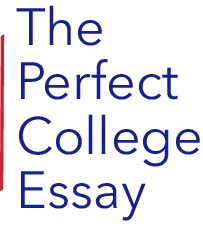When it comes to applying to college, one of the most important decisions students and families face is when to apply. There are more options than ever—Early Decision, Regular Decision, Rolling Admission, Early Action, and more—each with different rules and benefits. Understanding the differences can help you create a smart, personalized application strategy.
Let’s break down the most common types of deadlines:
1. Early Decision (ED)
Early Decision is a binding application plan. You apply in November, and if you’re admitted (usually by mid-December), you’re required to attend that school and withdraw all other applications.
Best for: Students with a clear first-choice school and strong applications by fall of senior year.
Caution: You won’t be able to compare financial aid offers.
2. Early Decision II (ED II)
ED II works just like Early Decision but with a later deadline—typically in January, with decisions released in February.
Best for: Students who need more time to strengthen their application but are still ready to commit to a top-choice school.
3. Regular Decision (RD)
This is the traditional, non-binding option. Applications are due in January or February, and you’ll hear back in March or April. You can apply to multiple schools and compare offers before deciding.
Best for: Students who want flexibility, more time to build a strong application, or the chance to weigh multiple offers.
4. Early Action (EA)
Early Action is non-binding, meaning you can apply early (usually in November) and still wait until May 1 to make a decision.
Best for: Students who are prepared early and want to hear back sooner without the pressure of commitment.
5. Restrictive Early Action (REA)
Also called Single-Choice Early Action, REA is non-binding, but limits where else you can apply early. Policies vary by school.
Best for: Students who have one clear top choice but don’t want the binding commitment of ED.
Caution: Be sure to check each college’s REA rules before applying elsewhere early.
6. Rolling Admission
With Rolling Admission, colleges accept and review applications as they come in—typically starting in the fall and continuing into the spring. Decisions are sent out on a rolling basis.
Best for: Students who want an early answer or need more flexibility with their timeline.
Pro tip: Apply early in the cycle, as spots can fill quickly.
7. Deferred Decision
If you apply Early Action or Early Decision and don’t get an immediate acceptance or rejection, you might be deferred. This means your application will be reconsidered during the Regular Decision round.
Best for: Students who remain interested in the school and want another chance for admission.
Tip: Use the time to update the school with new grades, awards, or letters of recommendation.
8. Early Evaluation
Some colleges (mostly selective liberal arts schools) offer early evaluations—a heads-up on your chances before official decisions are released. These might indicate if you’re likely, possible, or unlikely to be admitted.
Best for: Students who want a sense of where they stand before hearing a final decision.
Note: These are unofficial and not offered by all schools.
9. Open Admission
Open Admission colleges accept all applicants who meet basic requirements (such as a high school diploma or GED). Most community colleges and some four-year colleges follow this model.
Best for: Students looking for guaranteed access to higher education, or who may be starting their academic journey and planning to transfer later.
Final Thoughts
There’s no one-size-fits-all answer to when or how to apply to college. The best timeline depends on your academic readiness, college list, financial needs, and personal goals. For some students, Early Decision offers a great advantage. For others, Regular Decision or Rolling Admission provides the right flexibility.
Need help building your college list or developing the best application strategy? We’re here to guide you through every deadline, every decision, and every detail—so you can apply with confidence.




